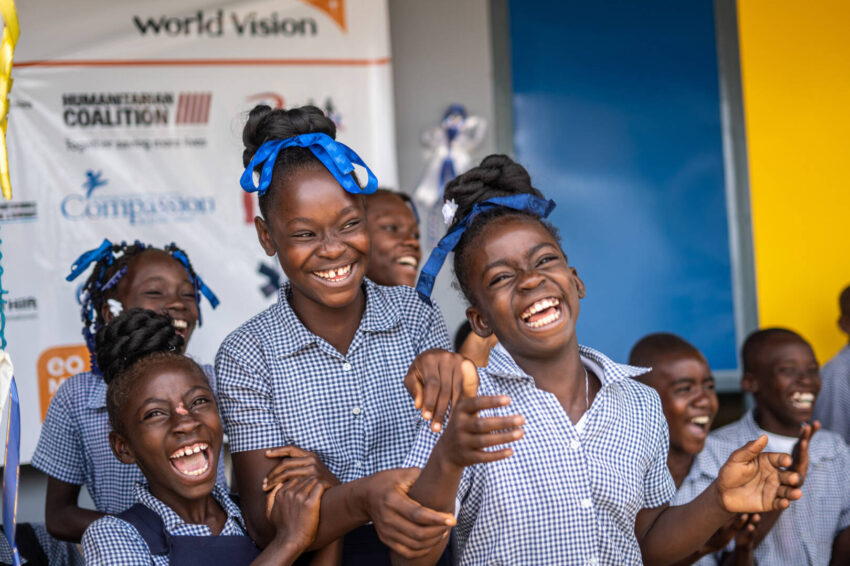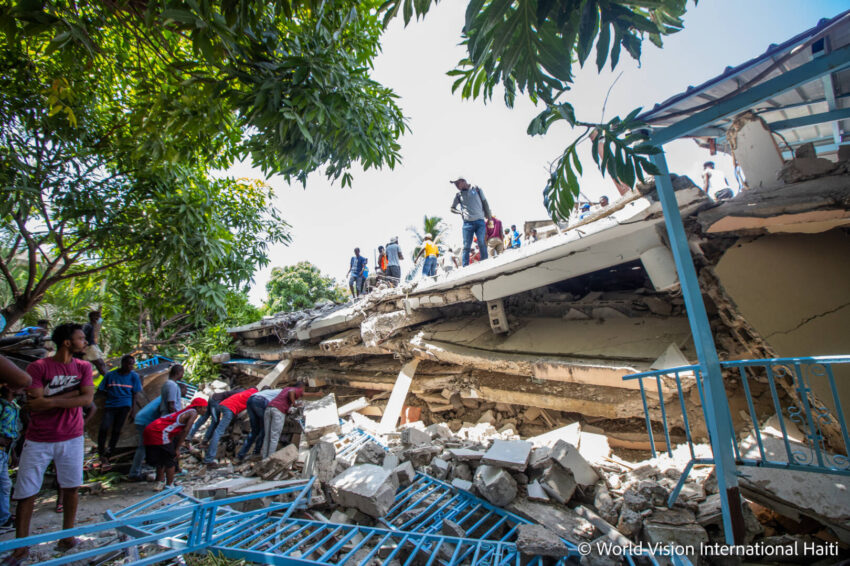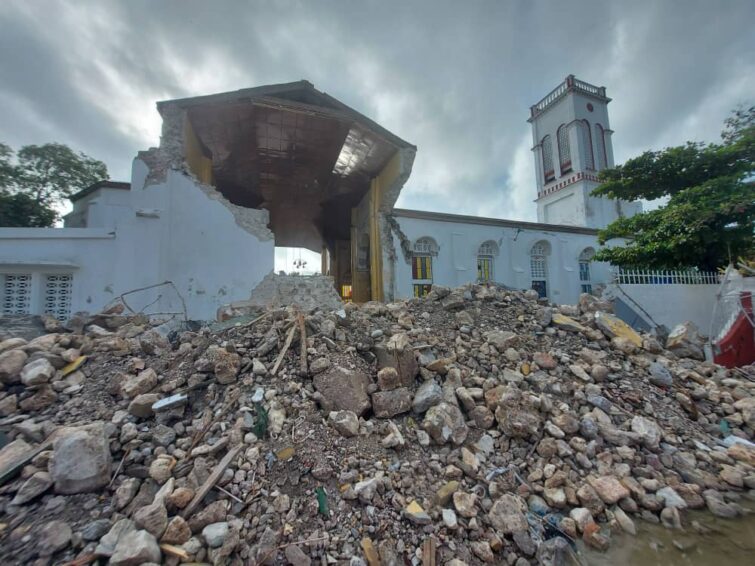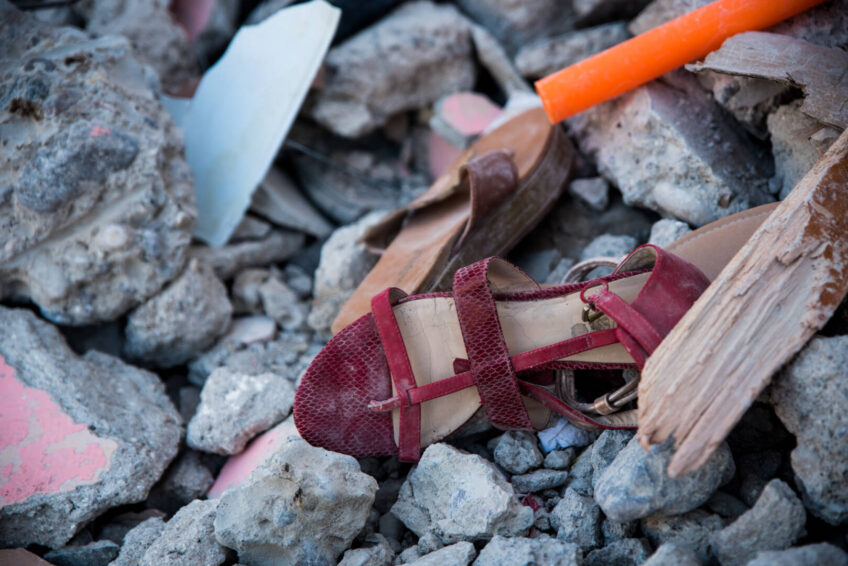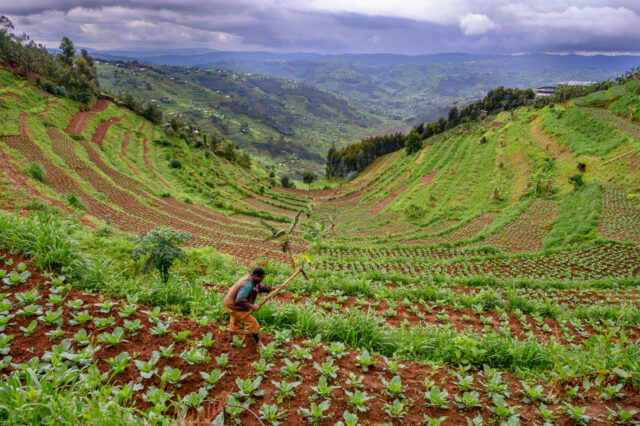Since the devastating earthquake that struck Haiti on August 14, 2021, the country has faced a complex and challenging situation. The magnitude 7.2 earthquake claimed several thousand lives and injured many more. The disaster exacerbated the existing vulnerabilities of a nation already dealing with political instability, gang violence, economic fragility, and a history of natural disasters, including the catastrophic January 2010 earthquake that killed as many as 300,000 people.
In the wake of the 2021 earthquake, hundreds of thousands of people, including children, find themselves in dire need of assistance, placing immense strain on resources and infrastructure. Challenges such as fuel shortages, heightened insecurity due to gang violence, and logistical difficulties have hampered relief efforts.
Haiti earthquakes: Facts, FAQs, and how to help
Explore facts and frequently asked questions about the 2021 and 2010 earthquakes, and learn how you can help people vulnerable Haitians today.
- Fast facts: 2021 and 2010 Haiti earthquakes
- How did World Vision respond to the 2021 earthquake?
- What challenges does Haiti face today?
- Why was the 2010 Haiti earthquake so destructive?
- How did World Vision respond to the 2010 Haiti earthquake?
- How can I help vulnerable children and families in Haiti?
- Timeline: Haiti earthquakes and recovery
Fast facts: 2021 and 2010 Haiti earthquakes
- Striking near Petit-Trou-de-Nippes, the 7.2 magnitude 2021 quake claimed over 2,000 lives and affected more than 1.2 million people, including 540,000 children, as reported by UNICEF.
- In 2010, a powerful 7.1 magnitude quake devastated the capital, claiming approximately 300,000 lives.
- The epicenters of the 2021 and 2010 earthquakes were approximately 63 miles apart and are thought to have occurred along the same fault line. The epicenter of the 2021 earthquake was 78 miles west of Port-au-Prince. In contrast, the 2010 earthquake’s epicenter was in Léogâne, just 15 miles west of the capital.
- The impoverished nation is vulnerable to natural disasters. According to the World Bank, over the past decade, Haiti endured nine disasters, including the 2016 Hurricane Matthew and the 2021 temblor, causing catastrophic impacts.
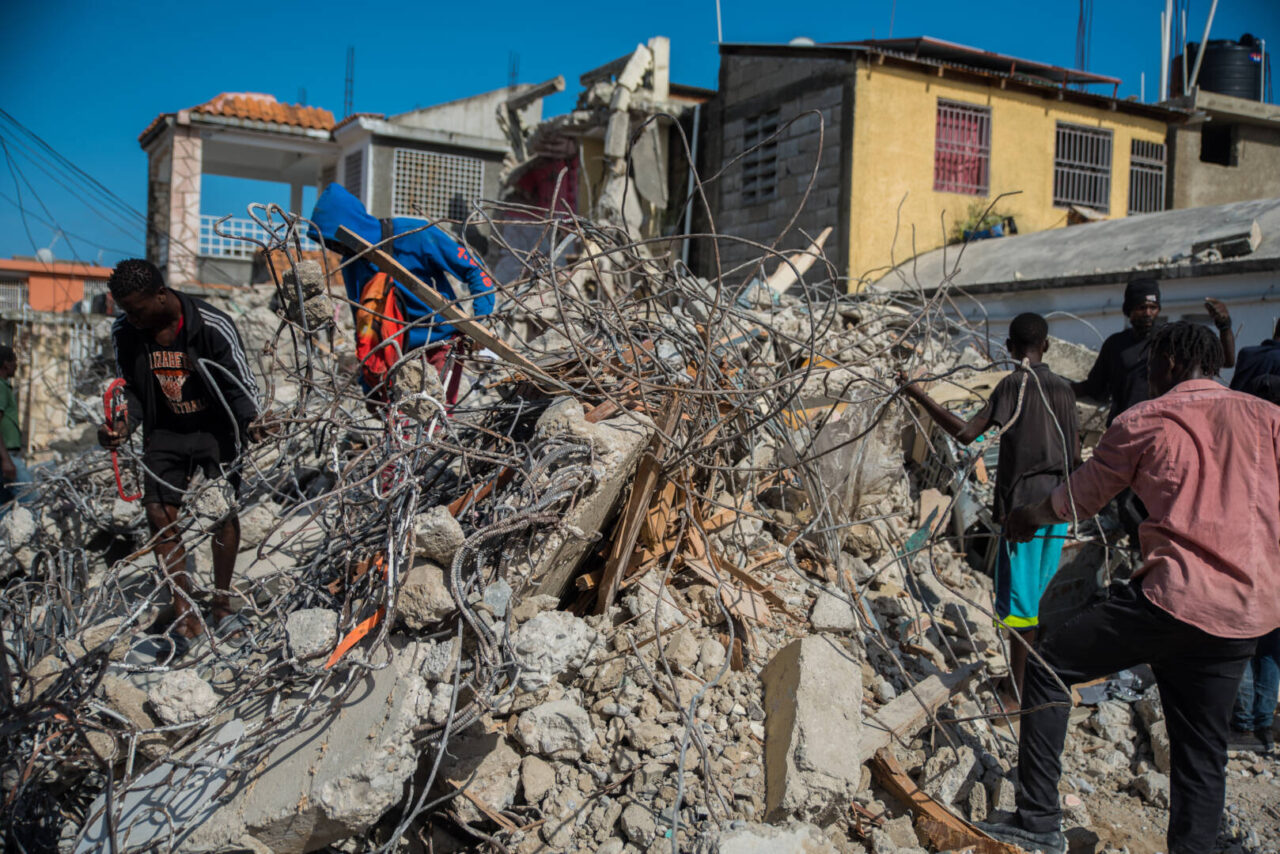
How did World Vision respond to the 2021 earthquake?
While World Vision has worked in Haiti for decades, our programs initially weren’t located near the quake-hit southern zones. However, recognizing the magnitude of the devastation, we responded to the affected communities with urgency, ultimately reaching over 155,000 people impacted by the disaster. A few areas of our impact in response to the 2021 earthquake include:
- Health and nutrition: Our health and nutrition programming, including mental health and psychosocial support, helped approximately 150,000 people.
- Cash assistance: We provided cash assistance to 11,120 people for essential food and living expenses.
- Food security and livelihoods: Our food security and livelihoods programs reached over 71,000 people through support like food vouchers, savings groups, and agricultural recovery programming.
After the quake, rebuilding lives and livelihoods
Alfred, a 46-year-old merchant in Petit-Trou-de-Nippes, has newfound hope knowing there will be enough food for his family. His children, Kervens and Erika, who were 18 and 13, respectively, at the time of the earthquake, are able to attend school, both eager to learn and dream, while Alfred can return to successfully running his own business.

Like others in his neighborhood, Alfred’s family faced the devastating consequences of the 2021 earthquake. Just moments before the disaster struck, Alfred had been applying mortar to his floor, working on a home improvement project. Alfred recounted the terrifying sight of walls collapsing and debris flying everywhere during the quake. His family suffered a great loss, with their possessions buried beneath the wreckage of their home. His business took a hit, and everyone in the community scrambled to find necessities like food, water, and shelter.
“It was a dark time for our family as we faced scarcity in every aspect. Food became a luxury, and our trade was no longer a priority for the people. Everyone was focused on finding sustenance, just like us.” —Dipon, Alfred’s wife.
Less than a month after the earthquake, World Vision identified vulnerable households like Alfred’s and quickly equipped them with essential items like food, cooking utensils, and bedding. We also distributed seeds, delivered goats, and provided cash to support his sustainable recovery. With the seeds and the 25,000 gourdes (approximately $184) he received from World Vision, Alfred started a garden that nourishes his family throughout the year and expanded his business, which is now consistently profitable. He also joined a World Vision savings group, where merchants can support each other. Alfred said World Vision’s support exceeded his family’s expectations.
“In my time of need, what I craved the most was food and money. I am astonished by how World Vision went above and beyond my expectations,” Alfred said. “They not only provided money and food but also seeds and invaluable items that helped us rebuild our lives.”
Alfred added: “Today, my life has undergone a tremendous transformation. I wake up each day knowing my family has enough food to eat. My children attend school regularly, and my business provides me with a dignified living.”
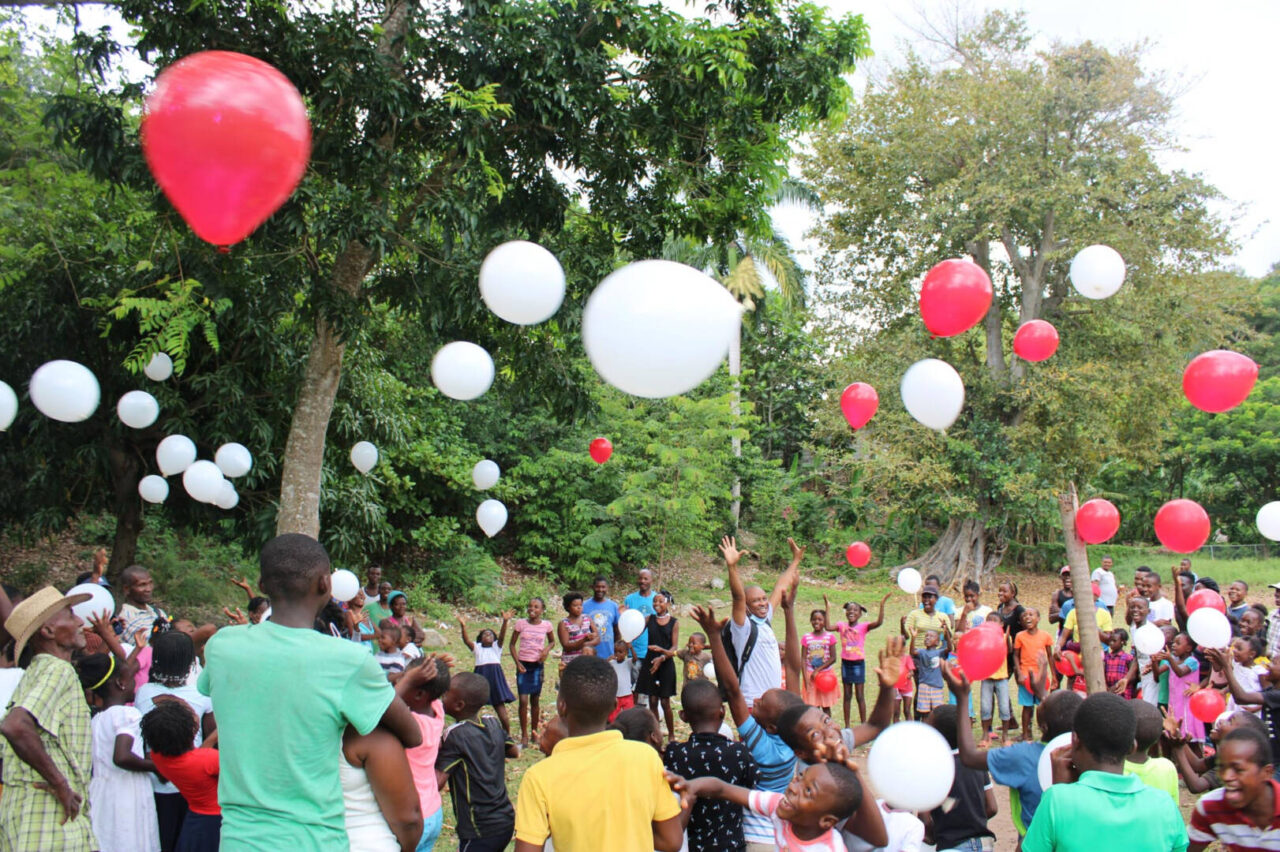
What challenges does Haiti face today?
For decades, Haiti has experienced several crises alongside natural disasters like earthquakes. The COVID-19 pandemic further deepened economic struggles and strained a fragile healthcare system. Presently, the situation in Haiti is dire, with 5.5 million people requiring humanitarian assistance due to escalating sociopolitical instability and rampant gang violence. The prevalence of gang-related crimes has soared to alarming heights, marked by a surge in violent incidents, armed robberies, and kidnappings. As the escalation of violence hampers aid efforts, hunger in Haiti is concurrently reaching record levels. Nearly half of the country’s population is experiencing acute hunger, according to the United Nations.
Learn more about the Haiti crisis and how World Vision is responding.
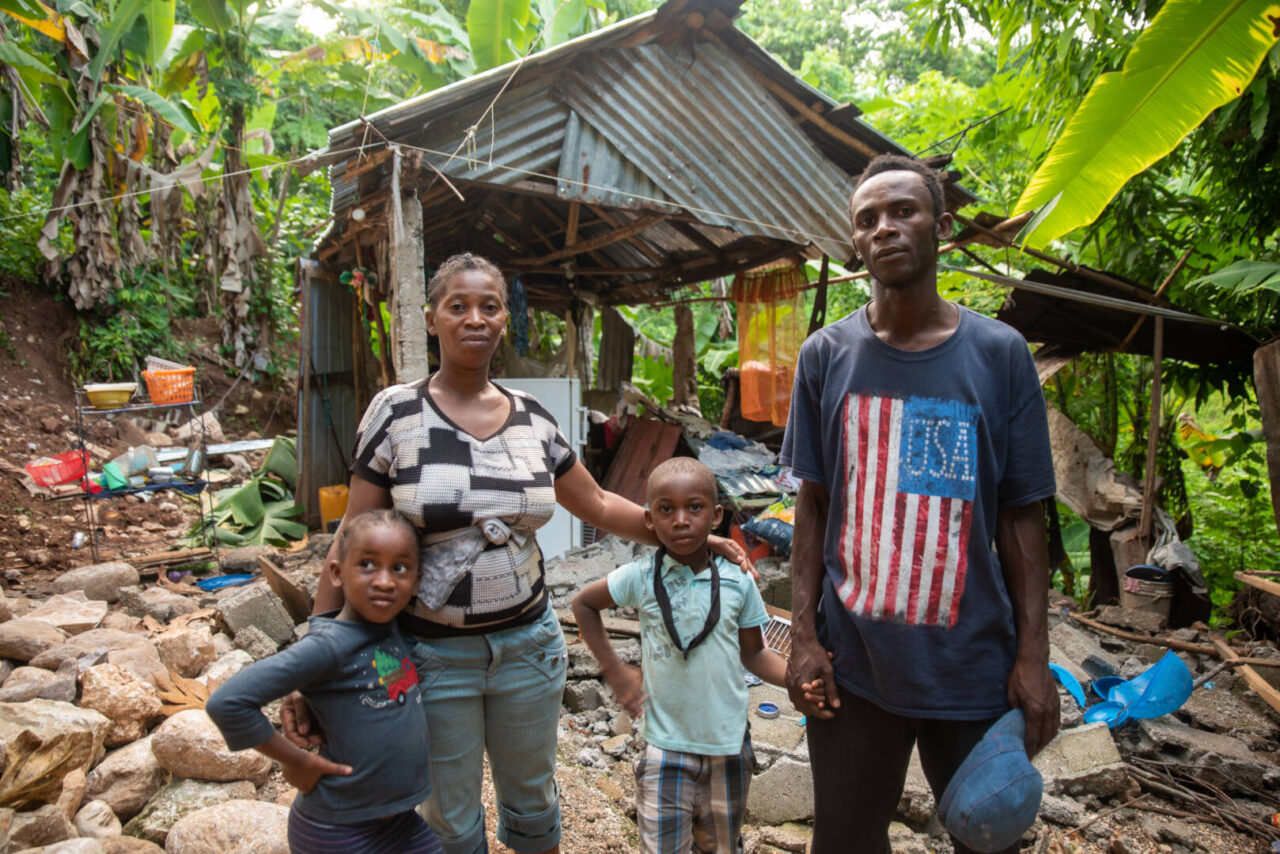
Why was the 2010 Haiti earthquake so destructive?
The 7.0 magnitude earthquake struck a shallow depth (6.2 miles below the surface), intensifying its ground-level impact. Because the earthquake took place just 15 miles away from Port-au-Prince, the capital city where more than 2 million lived, the seismic force was catastrophic. The city’s inadequate building standards and subpar construction led to the collapse of many multi-story concrete buildings, a consequence of the lack of enforced building codes. As a result, Haiti faced the greatest humanitarian need in its history.
How did World Vision respond to the 2010 Haiti earthquake?
For 30 years before the 2010 earthquake, World Vision was in Haiti, working to improve the lives of children and their families. Within minutes of the quake, our local Haitian staff, who had also suffered significant losses in the disaster, distributed pre-positioned emergency supplies. In the following years, their dedicated and unwavering efforts saved lives, alleviated suffering, and offered a promising future for thousands of affected Haitians.
World Vision mobilized its national and global support offices for its largest-ever coordinated effort. The Haiti earthquake emergency response team supported nearly 2 million people in the initial 90 days, offering essential services like food, shelter, and access to clean water, sanitation, and hygiene (WASH).
We also stayed in communities and supported families as they rebuilt their lives. As a result of World Vision’s work, from 2010 to 2015:
- 300,000 people were treated for cholera.
- 250,000 students were fed across 800 schools.
- Over 200,000 people were sheltered.
- 90,000 displaced people in camps accessed potable water for almost 2 years.
- 19,000 farmers were trained in improved agriculture techniques.
- 30 Child-Friendly Spaces were established for nearly 8,000 children.
- 10 schools were constructed.
World Vision remains committed to empowering Haitian children and families toward sustainable change, helping equip them to transition from subsistence to a fuller life.
How can I help vulnerable children and families in Haiti?
- Pray: Lift up children and families affected by recurring disasters in Haiti.
- Give to World Vision’s Disaster Relief Fund: Your gift will help provide emergency food aid, agricultural support, clean water, healthcare, and other essential care to children and families affected by disasters like both the 2021 and 2010 Haiti earthquakes and numerous hurricanes.
- Sponsor a child in Haiti: Help change a child’s life story as well as the future of their family and community by providing access to nutritious food, healthcare, clean water, quality education, and more.
Timeline: Haiti earthquakes and recovery
2010: Earthquake and aftermath
- January 12: A magnitude 7.0 earthquake hit Haiti, near Léogâne, about 15 miles west of the capital, Port-Au-Prince.
- January 20: While multiple aftershocks are recorded soon after the initial quake, the U.S. Geological Service reports the strongest aftershock was a 5.9 temblor on January 20 that collapsed many already damaged buildings.
- October: A cholera outbreak began and spread rapidly.
2010 to 2014: Continuing challenges
- 2011: UNICEF reported that 1 million Haitians were still in temporary shelters.
- 2012: Hurricane Isaac and Hurricane Sandy caused damage and flooding.
- 2013: By August, more than 8,000 Haitians died from cholera. Haiti was in the midst of a major food and nutrition crisis.
2015 to 2019: Prioritizing development amid setbacks
- 2015 to 2016: More than 1 million people were affected by drought because of El Niño conditions.
- October 2016: Category 4 Hurricane Matthew caused massive destruction and displacement.
- 2018: While progress had been made, some of the issues before the earthquake persisted in Haiti, such as weak political governance, lack of infrastructure, and limited access to basic resources.
- 2019: In March, opposition parties blocked the vote to ratify a new prime minister, effectively shutting down the government and calling for President Moïse to resign. By the fall, widespread anti-government protests had shut down schools and businesses and worsened humanitarian needs.
2020 to 2023: Reeling in repeated blows
- July 2021: The Caribbean nation was embroiled in a political crisis after the assassination of President Moïse on July 7.
- August 2021: A magnitude 7.2 earthquake hit Haiti, causing at least 2,200 deaths and widespread destruction.
- 2023: Haiti faces a complex and challenging situation two years after the devastating earthquake. Issues like a lack of fuel, increased insecurity due to gang violence, and challenges in logistics continue to hamper humanitarian efforts to support vulnerable Haitian communities.
Sevil Omer of World Vision’s U.S. staff contributed to this article.
